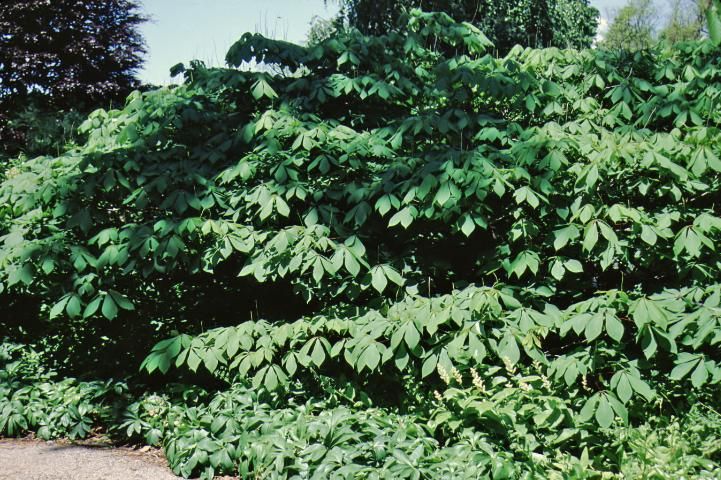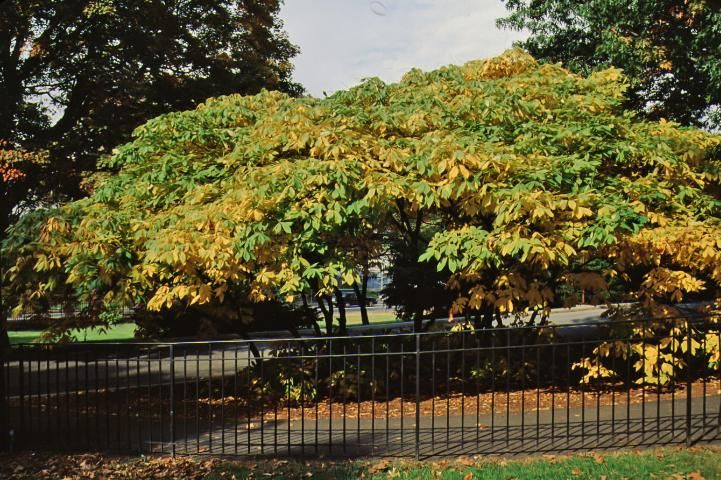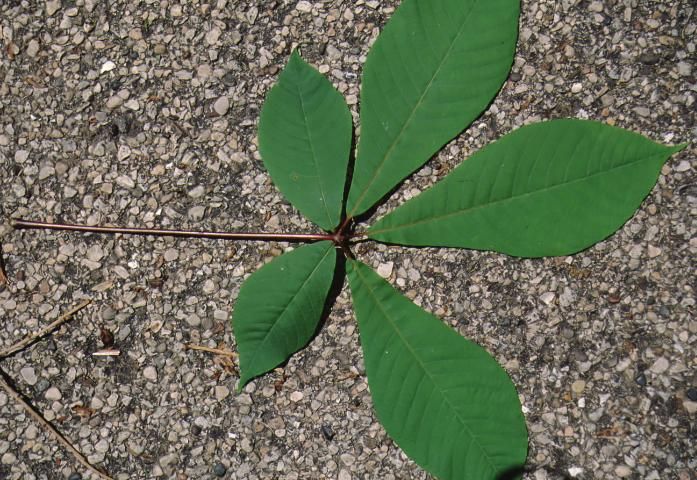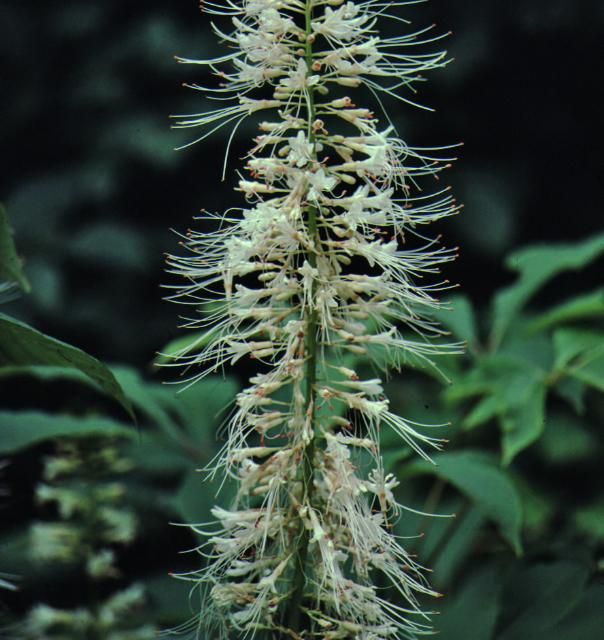Introduction
Native from Alabama and South Carolina into Florida, bottlebrush buckeye forms a rounded mass of dark green, palmately-compound foliage in mid-spring (Figure 1). The shrub eventually reaches about 8 feet tall but grows to 12 feet wide. It can be found in its native, moist, shaded habitat flowering in early summer. The delicate, showy, white flowers are held well above the foliage in terminal panicles up to 12 inches long. Bottlebrush buckeye has been successfully used as far north as Chicago (hardiness zone 5).

Credit: Ed Gilman, UF/IFAS

Credit: UF/IFAS

Credit: UF/IFAS

Credit: Ed Gilman, UF/IFAS
General Information
Scientific name: Aesculus parviflora
Pronunciation: ESS-kew-lus par-vif-FLOR-uh
Common name(s): bottlebrush buckeye
Family: Hippocastanaceae
Plant type: shrub
USDA hardiness zones: 5 through 9A (Figure 5)

Planting month for zone 7: year-round
Planting month for zone 8: year-round
Planting month for zone 9: year-round
Origin: native to Florida
Invasive potential: not known to be invasive
Uses: specimen; screen; foundation; border
Availability: somewhat available, may have to go out of the region to find the plant
Description
Height: 5 to 10 feet
Spread: 10 to 15 feet
Plant habit: round
Plant density: moderate
Growth rate: slow
Texture: coarse
Foliage
Leaf arrangement: opposite/subopposite
Leaf type: palmately compound
Leaf margin: crenate
Leaf shape: oblong; obovate
Leaf venation: pinnate
Leaf type and persistence: deciduous
Leaf blade length: 4 to 8 inches
Leaf color: green
Fall color: yellow
Fall characteristic: showy
Flower
Flower color: white
Flower characteristic: spring-flowering
Fruit
Fruit shape: elongated
Fruit length: 1 to 3 inches
Fruit cover: dry or hard
Fruit color: brown
Fruit characteristic: showy
Trunk and Branches
Trunk/bark/branches: typically multi-trunked stems; not particularly showy
Current year stem/twig color: gray/silver
Current year stem/twig thickness: thick
Culture
Light requirement: plant grows in part shade/part sun; plant grows in the shade
Soil tolerances: extended flooding; acidic; sand; loam; clay
Drought tolerance: moderate
Soil salt tolerances: poor
Plant spacing: 36 to 60 inches
Other
Roots: sprouts from roots or lower trunk
Winter interest: no special winter interest
Outstanding plant: plant has outstanding ornamental features and could be planted more
Pest resistance: long-term health usually not affected by pests
Use and Management
Allow plenty of room for this spreading shrub since it looks best without pruning. Pruning ruins the natural uniform shape. Locate it in the partial or full shade for a splash of color in early summer. Fall color is yellow, occasionally developing into a short-lived showy display.
Design Considerations
Bottlebrush buckeye works well as a background or massing plant to highlight the forms and colors of companion plants and block undesirable views. The fine texture and medium leaves of the buckeye will show well with contrasting plant features such as large leaves, coarse texture, thick stems, and dark green or burgundy color. Other contrasting textures include thin blades and clumping, arching forms of grasses and other vase-shaped, small-leaved shrubs. Contrasting size and shape such as low-growing groundcover with a sprawling, mounding form will emphasize the upright, arching shape of buckeye. To create large plant masses select plants with similar characteristics that blend with the buckeye.
Pests and Diseases
Few problems are reported on this nice, native plant.